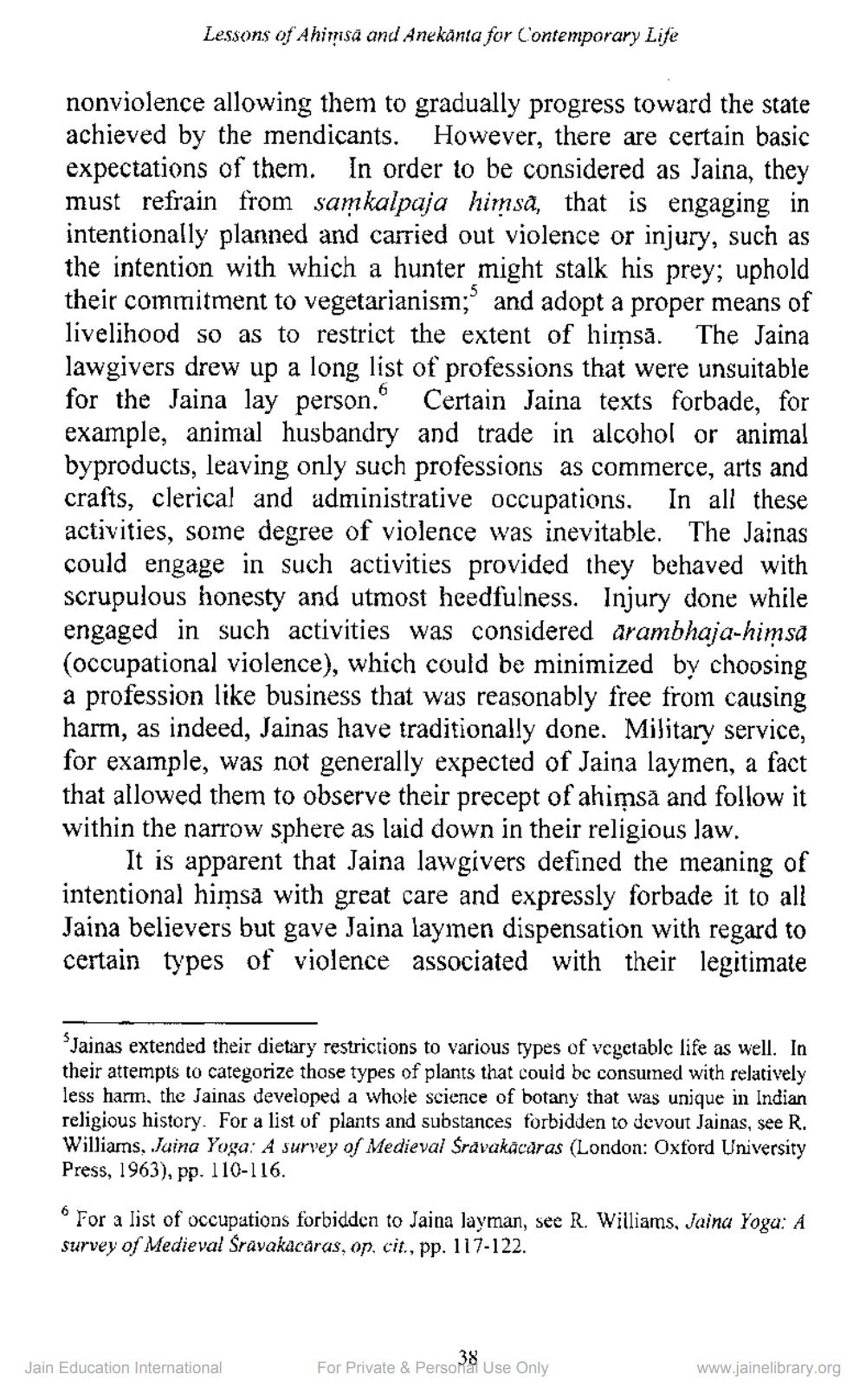Book Title: Ahimsa and Question of Just War Author(s): Padmanabh S Jaini Publisher: Z_Lessons_of_Ahimsa_and_Anekanta_for_Contemporary_Life_014006.pdf View full book textPage 4
________________ Lessons of Ahimsa and Anekānta for Contemporary Life nonviolence allowing them to gradually progress toward the state achieved by the mendicants. However, there are certain basic expectations of them. In order to be considered as Jaina, they must refrain from samkalpaja himsa, that is engaging in intentionally planned and carried out violence or injury, such as the intention with which a hunter might stalk his prey; uphold their commitment to vegetarianism; and adopt a proper means of livelihood so as to restrict the extent of himsă. The Jaina lawgivers drew up a long list of professions that were unsuitable for the Jaina lay person. Certain Jaina texts forbade, for example, animal husbandry and trade in alcohol or animal byproducts, leaving only such professions as commerce, arts and crafts, clerical and administrative occupations. In all these activities, some degree of violence was inevitable. The Jainas could engage in such activities provided they behaved with scrupulous honesty and utmost heedfulness. Injury done while engaged in such activities was considered arambhaja-himsa (occupational violence), which could be minimized by choosing a profession like business that was reasonably free from causing harm, as indeed, Jainas have traditionally done. Military service, for example, was not generally expected of Jaina laymen, a fact that allowed them to observe their precept of ahimsă and follow it within the narrow sphere as laid down in their religious law. It is apparent that Jaina lawgivers defined the meaning of intentional himsa with great care and expressly forbade it to all Jaina believers but gave Jaina laymen dispensation with regard to certain types of violence associated with their legitimate Jainas extended their dietary restrictions to various types of vegetable life as well. In their attempts to categorize those types of plants that could bc consumed with relatively less harm, the Jainas developed a whole science of botany that was unique in Indian religious history. For a list of plants and substances forbidden to devout Jainas, see R. Williams, Jaina Yoga: A survey of Medieval Sravakācāras (London: Oxford University Press, 1963), pp. 110-116. For a list of occupations forbidden to Jaina layman, see R. Williams, Jaina Yoga: A survey of Medieval Sravakacaras, op. cit., pp. 117-122. Jain Education International For Private & PersoP& Use Only www.jainelibrary.orgPage Navigation
1 2 3 4 5 6 7 8 9 10 11
